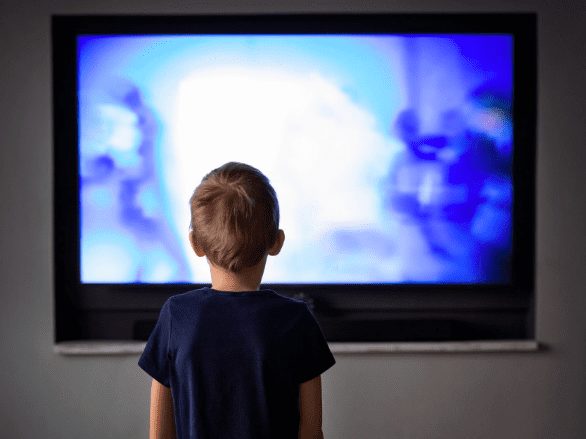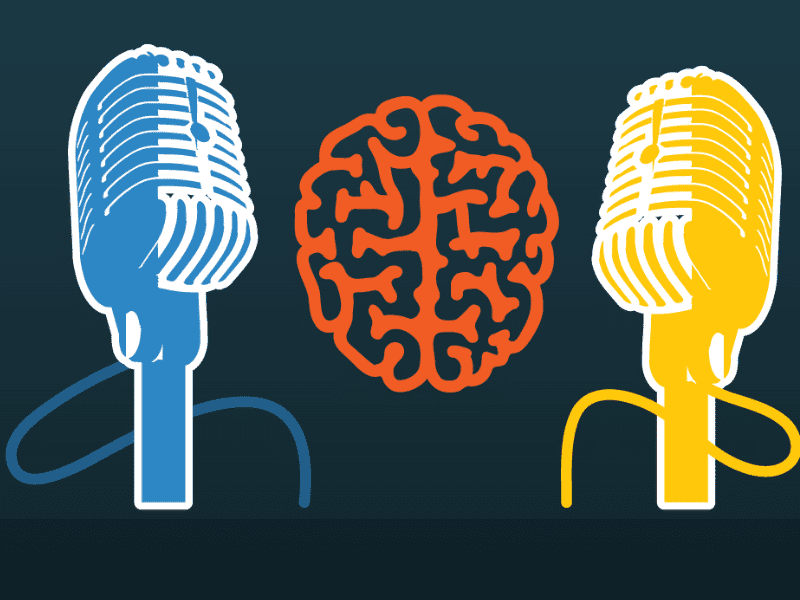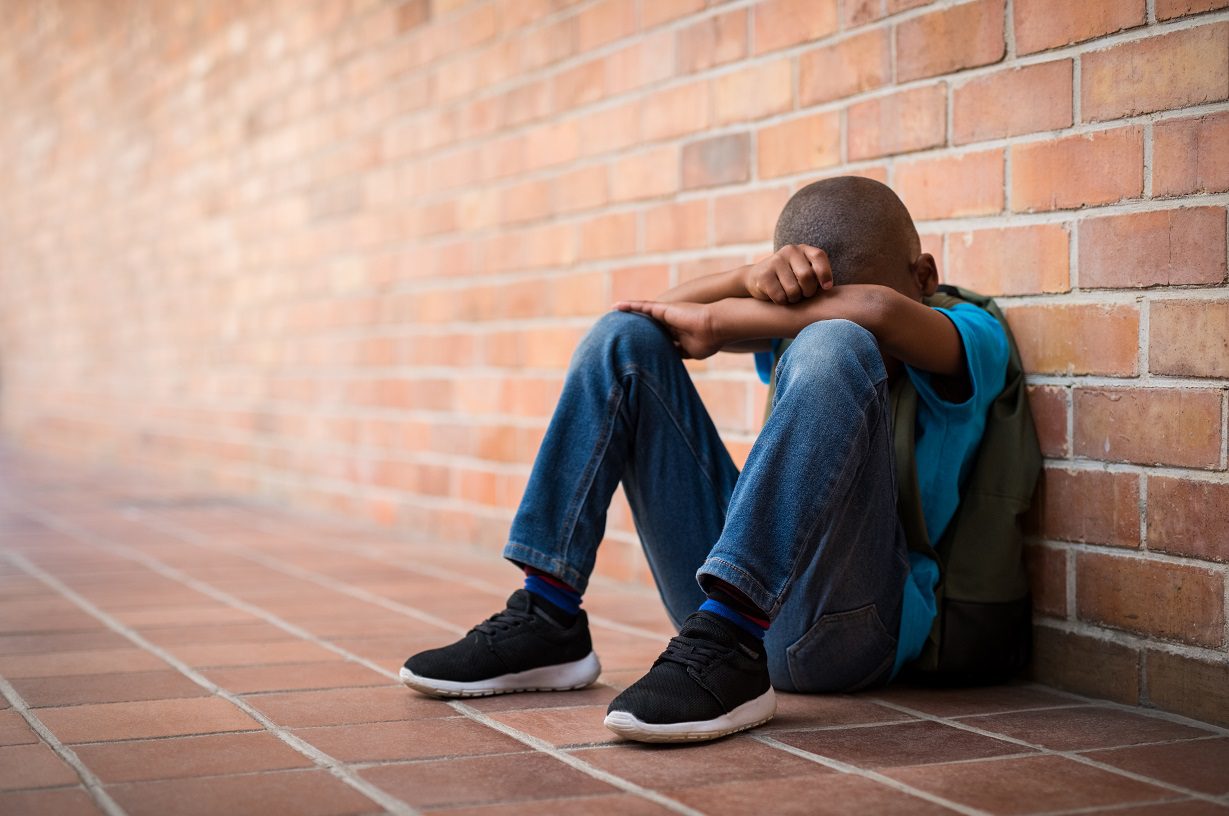Coping With Gun Violence, Together, feat. Gretchen Felopulos, PhD (Shrinking It Down)
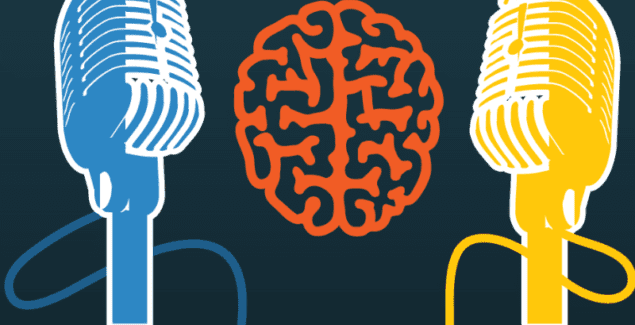
Posted in: Hot Topics, Multimedia, Podcast
Topics: Hot Topics, Stress
With increasing gun violence and constant media coverage, many kids are scared to go to concerts, to malls, to school.
Tune in below, or search for “Shrinking It Down” wherever you get your podcasts.
Many adults are feeling the same – coping with gun violence can be paralyzing. Today, special guest Gretchen Felopulos, PhD, the education and training lead for the Center for Gun Violence Prevention at MGH, joins Gene and Khadijah to help us learn more about gun safety, youth suicide, best practices for lockdown drills, talking about guns to those with opposing views, and so much more. Be sure to check out the resources, below.
Media List
Follow along with the conversation.
- Gretchen Felopulos, PhD (LinkedIn)
- Center for Gun Violence Prevention (Massachusetts General Hospital)
- Twitter, TikTok, and Siloization (The Medium)
- Firearm suicide among America’s youth has hit its highest rate in 20 years, report finds (CBS News)
- Talking to Kids About Fear and Violence (Mental Health America)
- Can Community Programs Help Slow the Rise in Violence? (ProPublica)
- Are active shooter drills worth it? (Vox)
- Active Shooter Situations: Threat Assessment Teams (TAT) (REMS TA Center)
- School shooting false alarms, swatting calls put teachers, students and parents on edge (PBS News Hour)
- Nine Ways to Help Students Discuss Gun Violence (Greater Good Magazine)
- How to Have a Productive Conversation About Guns with Someone Who Holds Different Views? (The Trace)
- Extreme Risk Protection Orders (ERPO) or “Red Flag” Laws (American Academy of Pediatrics)
- Activism Is Good for Our Teens (MGH Clay Center)
- Keep the Peace Contract (Boys Town)
- About Wear Orange (wearorange.org)
Thanks for tuning in. We hope our conversation will help you to have yours. If you like what you hear, please leave us a review!
Transcript
SPEAKERS: Gene Beresin, MD, MA; Khadijah Booth Watkins, MD, MPH; Gretchen Felopulos, PhD,
Gretchen Felopulos, PhD 00:00
You know, the factors that contribute to violence exist across the planet. But the reason for our gun violence in this country and the rates at which they happen or it occurs is because it’s so easy to get your hands on a gun. So it’s not about the guns themselves. Pushing back on guns is not really the approach to take. It doesn’t work. But we do need to figure out how to make guns safer and really work to reduce the incidence of people getting their hands on guns who are just not not safe or not in a good place.
<MUSIC INTERLUDE>
Gene 00:33
Welcome back to Shrinking It Down: Mental Health Made Simple. I’m Gene Beresin.
Khadijah 00:39
And I’m Khadijah Booth Watkins.
Gene 00:41
And we’re to Child and Adolescent psychiatrists at the Clay Center for Young Healthy Minds at Massachusetts General Hospital. Today we’re going to talk about a pretty heavy topic. And that’s about gun violence and our young people.
Khadijah 00:53
The impact of exposure to gun violence has been an issue for decades, and one that hasn’t gotten the attention that it deserves. The add on to that in the more recent years, the increasing gun violence and mass shootings we’re seeing in communities across the country has gotten worse. It all really feels scary. And even paralyzing, not just for our kids, but for us as adults as well and parents.
Gene 01:15
Not to mention that. We’re seeing a lot more that digital news and social media and the safety preparation that communities take now. Now I’m thinking of how traumatic the lockdown drills are in schools are responding heavily to swatting or prank calls which has been increasing. I think they were like over 380 this year whereas other so far since January, it’s it’s it’s scary. It’s a lot to manage emotionally. Many kids are getting scared to go to concerts to go to malls to go to school, and the number of mass shootings seems to be an everyday occurrence. And we have a special guest today to help us with this really difficult conversation. Dr. Gretchen Felopulos is a clinical psychologist at MGH. Dr. philopatier specializes in neuro psychological and psychological assessment for kids, adolescents and young adults. And among her other old roles. She’s an assistant professor in psychology at Harvard Medical School, and the end the education and training need for the MGH. For gun violence prevention. I might also add that she’s contributed more than once to the clay said, Clay Center website. In fact, we did it we have a blog that you can vote for us. So welcome, Gretchen.
Gretchen Felopulos, PhD 02:35
Thank you so much. I’m so nice to be here, though, I do have to say I look forward to the day that these conversations aren’t necessary. But for now, wonderful to have the chance to talk about it together.
Gene 02:48
So before we get into discussion, can you tell us a little bit about your role in the mth center for current violence prevention and and your interest in income safety measures?
Gretchen Felopulos, PhD 02:59
Sure. Well, I would say my my interest really probably was sparked, I guess, for lack of a better word. Well, in 2012, with the Sandy Hook Elementary shooting, you know, at that point, I’m a mom of five. And at that point, I had, some of my kids were elementary school age. Of course, being a child psychologist, this hit, you know, hit home in terms of the impact I was seeing on, you know, kids and families are reeling from that. I was also a part time school psychologist at the time, and was of course having to work with the staff and students on trying to process this. And I think ultimately, the shooter himself, in many, many ways resembled a lot of the kids that I work with and see for evaluation. So on all friends, I was really alarmed by that. And that, I think that really kind of tipped me over in terms of finally motivating me to do something. And fortunately, I was able to find at that point, the MGH Coalition for gun violence prevention, which eventually received funding in 2019, to become a center.
So our mission is really sort of three tiered and my sort of three pillars really so research, training and education, and then community engagement. So my particular roles and interests at the center are around doing teaching and training with incoming residents and interns and staff who are interested in the MGB system as well as now outside. We work with Boston University grad students, and we’re now consulting to hospitals nationwide. We’re working with Dell Children’s Hospital in Texas, helping them develop their own training and education program, basically working on bringing the conversations of firearm safety and gun violence prevention to the office to clinical care. So training healthcare professionals on how to talk with people about gun ownership and how to store gun safely, as well as other measures. And otherwise the community engagement piece is is kind of my favorite piece. To where we do a lot of work with community partners around, kind of building the bridge between sort of our being, having some of the resources, but not necessarily being credible messengers ourselves as a group of mainly white physicians and other health care providers, not necessarily being or feeling appropriate to kind of walk in and say, Hey, here’s what we know, here’s what you should do. That’s, that’s not cool. And that doesn’t work. But with community partners and building bridges in that way, we’ve, we’ve done some really cool projects, which probably a whole other podcast, but I’m just shouting a few out the Peace Institute, just an outstanding organization in Boston, Boston uncornered, which is a sort of reentry program, as well as an incarceration prevention program. Teen empowerment, awesome group, so many, many programs out there. But that’s a really kind of wonderful and exciting thing that we’re doing there at the center as well.
Khadijah 05:59
We feel so fortunate to be able to have you here with us at MGH and spend this time with us. And I too wish that we didn’t have to keep having this conversation. And it is getting, it seems like harder and harder to have conversations with our young people about it, and about safety and their anxieties around it. But before we get into the emotional angle of this, which we will have to come back to, I want to start with a little bit of, I guess, background and context around why gun violence is such a huge public health issue here in America and where we’re seeing it play out most how it’s collectively impacting our kids and our communities.
Gretchen Felopulos, PhD 06:39
Sure, so you know, it’s interesting, because in Jean, and I’ve talked about this before, where, you know, the causes of gun violence get sort of, you know, there’s there’s various sort of theories, and not any one of them is necessarily wrong, but you’ll hear like, oh, it’s the mental health crisis in our country, or it’s, you know, it’s racism, it’s an an equity of resources, or access to resources, its lack of opportunity, lack of education, various various theories like that. But ultimately, every place internationally, those things are are going on, right, those those factors exist, pretty much everywhere. What’s the difference here, because this is a uniquely American problem. It’s It’s amazing the extent to which are numbers, I’ll do it as if it were a competition, other similar countries in terms of, you know, sort of socioeconomic status and other factors. And really, the big issue, the big thing is easy access to guns.
So we have roughly 400 million guns in our country, and we have 328 million people. So we have more guns than people, which is a huge problem. And, and so you know, the factors that contribute to violence exist across the planet. But the reason for our gun violence in this country and the rates at which they happen, or it occurs is because it’s so easy to get your hand on a gun. So it’s not about the guns themselves, pushing back on guns is not really the approach to take. It doesn’t work. Guns are a part of the American culture, they’re in our constitution terms of having a right to own them. But we do need to figure out how to make guns safer, and keep them in the hands of responsible gun owners and keep them safe when they’re in households. And really work to reduce the incidence of people getting their hands on guns who are just not not safe or not in a good place to have one. So that’s kind of the the angle we work from a harm reduction perspective or like to talk about it that way. But, yeah.
Gene 08:39
So to take that, to dive a little deeper dive into that. You mentioned that there are many causes like the people blame, like mental health, social media. So what about what about? And I totally agree that if you look at the charts, I mean, the number of guns we have compared to any other country in the world, it’s just unbelievably huge. But what about the phenomena of copycat phenomenon? Through social media? I mean, we determined I think, fairly substantially that among teenagers, that when there’s a sensationalized suicide, either with a celebrity or in a narrative, that is a two week window of a copycat phenomenon, and I know that a lot of folks who were dealing with violence homicides in particular, have wondered about whether or not a similar process that occurs with guns. Could it be that that, that there’s copycat phenomenon analogous to suicide, and easy access? And that’s a bad formula.
Gretchen Felopulos, PhD 09:44
Sure, absolutely. And I think you know, again, social media has made it so much easier to learn about and kind of hyper focus on a mass shooting for example, so that the those who might be predisposed to getting over stimulated or wanting, you know, to sort of, I don’t know, get the attention, whatever, whatever would be motivating that person, it’s very easy to do what they call siloing. Now, which is just becoming fully immersed in the media coverage, and the backstories, and the victim stories that surround a mass shooting. And so it would be easy for someone to sort of feed that impulse or that urge, with all of the exposure that these events receive. And you know, the interesting fact is that mass shootings, including school shootings, really, they represent only 1% of the gun violence in our country. And so that’s one of the things that I think, you know, in in sort of talking about this, it’s really important to remind our kids and ourselves, because it is terrifying, when you see the news, and there are there’s, you know, at least one mass shooting every day, right, not all of them get received coverage. But when you think about it, statistically, it really does represent a very, very small threat, it’s hard to see it that way. Where the real threat lies, believe it or not, is the risk of gun violence, gun related deaths due to suicide.
So this kind of brings us back to okay, we need to make sure that if we do have a gun in the house, that it is safely stored, because most people who attempt suicide are getting their gun from their home. So that’s the thing we really you know, in terms of linking firearms to suicide, and knowing that those who attempt suicide with a gun will end up dying 90 plus percent of the time, and those who survive usually aren’t in any place to accept intervention or treatment that we really need to focus on, obviously, the mental health aspect of that, but from a very sort of practical perspective, making sure a gun in the home is stored, unloaded and stored in locked in a separate place. And the ammunition stored and locked separately, is sort of the ideal, so that, you know, we’re minimizing the chances of someone getting a hold of that gun on impulse. That’s, that’s something to really kind of emphasize. I mean, the main, the primary way in which people attempt suicide is by intentional overdose. So that is the most common way in which people attempt it, but the most lethal can now it continues to be guns, and so and suicide by gun represents 50 to 60%, depending on the year of all firearm related deaths in our country, pretty consistently between 50 and 60%, every year, so we have around 50,000 deaths a year due to firearms, of which at least half to two thirds are related to suicide. So higher risk populations include, you know, more and more kids and more and more kids and communities of color. The rates for young Black men and girls, boys and girls and young boys and girls and Latino population, the risk of suicide, and particularly via handgun is or beat via gun is increasing. So those are scary numbers. And I know as parents that scary.
So, you know, it’s important to kind of circles back to the importance of talking with our kids being present and involved not in a helicopter parent way, but in a way that allows them to know you’re there for them and that you you know, will listen and we’ll help in any way you can.
Gene 13:21
What about the statistics on on handguns? on on on I’m sorry, on on homicides, in particular gang gang violence, because that used to be the number one cause of death among African American youth 14 to 24 or something? Is that still the case that access to firearms among gangs is a major cause of death?
Gretchen Felopulos, PhD 13:46
Well, gangs are a part of that. But But yes, it continues, the statistic continues that the number one cause of death for black men, males, youth and adult males in our country is gun violence. So 1 to 2% might be one to 2% of gun violence related deaths are police shootings. Now certainly those aren’t all Black men or Black boys, but quite a high percentage of those are. Certainly there are there is city related street related violence may not all be gang related. But that certainly does account for a high percentage of those homicides. But But yeah, and now as I mentioned before, a portion of those, those statistics are now related to suicide. So but yes, absolutely. That’s a step that’s been present for, you know, a number of years that, that black men, black young men and adult men are at much greater risk. I think black men are 10 times more likely to be killed by a gun than other other men in our country. So yeah.
Khadijah 14:51
One huge question that I think is at the top of so many parents minds, and it’s a really a raw emotional one and it brings me back to The earlier kind of comments that I made about how the heck are we supposed to have these conversations with our youngsters? How are we supposed to talk to them about the threats in the community and at school and kind of public places such as the supermarket in the mall, when it really does feel so pervasive? And I know it really, in the grand scheme of things, it’s still such a rare occurrence, but with media and the news and, and online, it feels like it’s happening all the time. So how are we supposed to kind of reassure our kids about their safety in a world that even to us, as the adults and the parents feels unsafe and insecure? It’s not the easiest question, but…
Gretchen Felopulos, PhD 15:42
Right, no, no. And you know, and there’s not a one size fits all response, because very, unfortunately, not all communities have the same level of gun violence going on. So, for example, right, in Boston, there are communities that have gotten gunshots fired every day. So you have kids, you know, if not witnessing gun violence, you have them exposed to gun violence on a regular basis. Right. And, you know, the ramifications of that are huge. And the impact on learning, learning, let alone a general sense of well being and security and safety is enormous. So the ability for parents of those kids to reassure them that you’re safe, nothing’s going to happen. school shootings are rare. You know, that’s something we can generally speak to uniformly as parents in terms of the rarity of a school shooting, but in terms of the rarity of gun violence, and an everyday on an everyday basis, or in our community, that has to be acknowledged in different ways in different communities. And, you know, I wish there were different ways in which we were able to advise our kids, but I know my friend who her family lives in one of those communities and said, she had to tell her kid every day, make sure you keep your hands out of your pockets, you don’t put your hood up on your hoodie. You know, you don’t make eye contact unless you know the person, you know, rules that just to me, it’s it’s tragic and sad. But yet, those are the street rules. And you know, another mom in the community makes sure she drives her kid everywhere possible. She’s like, I don’t want him walking, that walking around the street is a risk factor in and of itself. So that’s the tricky part. Because we wish we could say, “Don’t worry, it’s not going to happen to you.” And in some communities, for the most part, we are able to say that, but in others, no, it’s not the case.
And so, you know, this is where we hope that we here in Boston, in particular, start using more of the community violence intervention programs that have been piloted in Chicago and in California and have been really successful. And we do have several, we have Roca, which is amazing. Some of the other programs I mentioned before, in terms of like Boston and cornered and teen empowerment. But we really, we could use more, because as you probably noticed, turning on the news, every single day, there’s a shooting in our Boston communities. So it is not easy being a parent these days period. But it’s particularly challenging being a parent, in communities of color. So I wish I had all the answers. But, yeah.
Khadijah 18:15
No, and that is helpful, and also reassuring, because it is the reality that, you know, often parents of color have to have very different conversations with our kids about safety and about what they can and can’t do. And it’s not right, but it’s what we have to do to do our best to keep them safe.
Gretchen Felopulos, PhD 18:31
Right. That’s right.
Gene 18:33
So turning to schools, which kids spend most of their time, what should we really wish? What should we realistically be expecting of our schools when it comes to gun safety? And the anxiety moments feeling around this? Not just in terms of emergency protocols of lockdown drills? But what about communicating with families with students with each other in his school, a place where we can have some of these conversations and drills? But what’s the what would you say is the best way of kind of orchestrating what schools can be doing for both the kids, the parents and the teachers?
Gretchen Felopulos, PhD 19:16
Sure, well, you know, I think one thing I’ve really learned in doing this work is that everything needs to be baby steps. So to come in with one big plan, overarching, sweeping, you know, multistep, thought out outline of how to sort of get this get the schools on board and the the students and the parents up to speed tends to be ill received. So I think in small steps and incremental ways we can get our school communities and the extended community more informed, and in the same way, I think less less anxious. So some of the things we’ve seen, be very successful are you know, starting with even, you know, school health and safety fairs. So we’ve gone and table that many of those where we, you know, bring information on safe gun storage, we hand out free gun locks, we bring information on sort of mental health services and things like that.
Also, I think, you know, the way in which the drills are handled, we are we are working on sort of talking with schools about prep and process. So prepping the staff, the kids, the parents, and letting law enforcement know that you are about to run a drill, like next day or two days from now, but the date is important. Because you know, there are kids who end before they realize it’s a drill, will call the cops and that becomes what looks like a swatting. So some of the swatting incidents have actually been lockdown drills, where kids have called the police and there hasn’t been a gun, but there’s a whole emergency response. So communication is pretty critical for for, I think, dealing with a lot of the issues that surround gun violence and cause us to be very anxious, so prepping, letting people know in advance, there’s going to be a lockdown drill. There actually are some really good books out there for teachers, parents, you know, guidance counselors to be reviewing with younger kids on sort of how to understand a lockdown drill they use like superheroes, and basically, you know, sort of some metaphor that I think de escalates the sort of intensity a little bit while also teaching them the necessary steps and rules to follow. But I think, you know, we need to let your let everyone know this is going to be happening without worrying about, are we losing some value to the drill by they’re not being spontaneity? No, we’re not, we are actually working toward reducing a major reason there’s such anxiety among our young people, which are these drills. I mean, it’s there are emerging studies coming out of, you know, looking at kids pre and post the introduction of lockdown drills.
And, you know, we’re sort of getting all the other factors off the table, it looks like that is of course, a huge piece of what’s on their mind and a kind of constant worry that these drills kind of create for them. So we need to not only prep everybody, we also need to build in time to process. So you don’t just have a lockdown drill and be like, “Okay, back to school back to life.” That doesn’t work well for people, we need a space and some time set aside to debrief and talk about the emotions that were stirred up, we need to ground people in the reality that this is really rare. Okay, we do fire drills two or three times a year, have we ever had a fire in school? Almost every school will say no. All right, so we do a lockdown drill, maybe twice a year, same kind of thing applies. But we know it makes everybody feel better if we’re prepared for an emergency. So giving them the facts to kind of ground them afterward. But then also, you know, walking it through and learning from the mistakes that happened. And, you know, making sure we’re supporting the kids, the staff and the parents who find this really emotional, you know, traumatic, because, you know, a lot of folks have lost people to gun violence. And this is very, for lack of a better word triggering. So those are certainly some steps that schools can do.
There’s a really big step eventually, schools, I think might be shifting to. They’re mandated in nine states right now. They’re called Threat Assessment Teams (TAT), which we generally agree is a horrible name, I would love them to be called community safety teams. But essentially, it’s where the school system, so relevant staff from the school system, providers in the community, church leaders, and like, let’s say health centers in the community, representatives, trustworthy Law officials and rescue squad officials, a parent group of parents all come together and form this kind of team taskforce with the goal of not just sort of reducing gun violence, but But it’s almost like, like a big safety net, where everybody’s kind of looking out for each other. And there’s a protocol for what you do when you have concerns around a student with mental health concerns a family that seems to be at risk, substance abuse stuff, so certainly not just related to gun violence threats. But the schools that have put these in place, the emerging research coming out is really impressive. Like 99% of the kids, parents and staff report an increased sense of safety and security and reduced anxiety. And I think like 1% of the threats made were actually followed through on when a school community has a threat, a TAT, a threat assessment team. So and the really important finding because of course, I was worried about this is their sort of profiling of particular students or families when we have a threat assessment team in place in a school community and in fact there they did not find disparities in that regard. So it isn’t like there’s profiling based racial profiling or, you know, particular kids are singled out for various reasons that really doesn’t seem to be occurring, at least in the one studied. But that’s something to I think, is really encouraging. And there is a formal protocol that’s endorsed by the FBI, the bureau Federal Bureau of, I’m going to get this wrong, but safety and something. So it’s endorsed by, you know, those that know the safety stuff. And so it’s looking pretty promising. We just need to change that name.
Gene 25:27
You know, what about Swatting? I mean, I’ve been concerned a little bit concerned about swatting. And for their listeners who don’t know swatting or false threats of gun violence in the school shooting to these to these teams actually diminish. So because swatting is like going into a theater and screaming fire, right. I mean,
Gretchen Felopulos, PhD 25:51
There’s huge penalties for that, that which needs to be I think, talked about constantly, because I think if people knew how much trouble they’d be in, when they get caught, not if when they get caught for doing this. It is so not worth skipping your final exam to call in a gun threat. You know what I mean? It’s it’s not so sorry to interrupt. But yeah.
Khadijah 26:12
But it’s really important for us to also know when I didn’t know that this also happens as a result of lack of communication and coordination when they have these drills. And I think that it’s really an important part because things can happen much smoother and much safely if there’s a coordination and it’s flooding team comes with all kinds of unpredictability and angst for our young people. But that being said, we have talked a lot about conversations just in this podcast along with you. And here at the Clay Center we are passionate and feel really strongly about having conversations about all topics, because we think it is so important that we talk openly about mental health issues and what’s impacting them. And I think Gene mentioned earlier that you even wrote an article about how do we talk to our, our young people about gun violence.
But my question to you is: How do we talk about the other have the other conversation with the other people, so not just our family, but our extended family, maybe our neighbors, our friends about our differences of in terms of views, as it relates to guns and gun ownership and keeping you know, one another safe? How do we have those conversations, because these are much harder to have in a way that is, you know, respectful, that is, can still be passionate, but but it still needs to be respectful. It needs to be productive and constructive. We need to be able to listen and hear and respond as opposed to just being so reactive. So help with have those conversations.
Gretchen Felopulos, PhD 27:39
Such a good point. And I think this is you really hit on something important around the topic of guns and gun violence in our country is that it people tend to avoid them because they feel like oh, it’s so politically loaded. Nope. Again, no pun intended, you can’t get away from all of the sort of gun related terms in our in the English language. It’s pretty, pretty amazing. But I think that’s one reason people have been so afraid to engage in discussions. But as it turns out, and this is something I wish the media would cover, year after year after year when Gallup or whomever does the polling of of Americans, regardless of political affiliation, way more than less agree that gun violence is a major problem in our country. So the most recent Gallup poll 75% of Americans said, gun violence is a major problem and a major concern to me. And I would like something done about it. Now, we may disagree on what there’s something done about it looks like. But the vast majority of us regardless of where we sit and political side political sides, see this as a problem that we’d like some action, we’d like something done about it. So I think that’s very, you could think of it as this is probably the most unifying issue in our country right now is our shared concern about gun violence as a public health crisis. So that doesn’t mean you can assume your neighbor or family member is going to share all your values around gun ownership or your feelings about guns. But I do feel like you, I guess, I want to instill in our listeners, the confidence that while most people are concerned about this, want to think about solutions. And I can probably have a pretty productive conversation as long as like you said, you Khadijah, I kind of checked my, my biases, and I come at this without judgment. And I’m open to listening, because that’s the only way we will be able to move this forward. So, yeah.
Khadijah 29:34
And what can we be talking about that will help us in our sense of safety? Like what kind of conversations can we be having with one another around this?
Gretchen Felopulos, PhD 29:44
Well, I mean, it might sound so basic, but honestly, I go back to the safe gun storage piece. Because really, if we think about the fact that most mass shootings occur in the home like if we use this the definition recommended by gun violence researchers and a lot of public health researchers, which is four or more people shot in one kind of situation or scenario. So, four or more people shot in one time on one situation, if you use that definition 61% of mass shootings occur in the home. So there we have the issue of a gun in the home, stored on safely or potentially with a gun owner who shouldn’t have the gun.
So I come back, then I circle back to making sure I mentioned that we in Massachusetts and also in 18 other states and the District of Columbia have what’s called a Red Flag Law in place. So say you are a family member, a kid and adult, or you are former roommate, a former partner. Basically, if you have any kind of meaningful relationship with a gun owner, that you are concerned about in terms of his or her safety, or the safety of others in that home, you can talk to the to somebody trustworthy at the local police department, whether it’s an officer or the Social Work team. You can also go to the local courthouse and file what’s called an ERPO, extreme risk protection order. And basically, if that’s supported, if you have, you know, can basically say there is reason to be concerned and just, you know, you don’t have to give a whole sort of, like legal document presentation. But basically, you know, I’ve seen this person, for example, drinking increasingly becoming more agitated, or seeming more depressed, whatever it might be, you can file this petition, and they will remove the gun from the gun owner for a period of time. And during that time, that person needs to get help. And in order to have the gun returned, there needs to be evidence that the person has sought treatment, there has been some intervention, they are able to be a responsible gun owner before that gun can be returned. So that’s something that I think, you know, most people don’t even know exist. In fact, we have a huge PR problem around the fact that we’ve had an ERPO law Red Flag Law in place since 2018. And it’s so underutilized.
In 2021, one of the most violent years on record, Massachusetts filed 8 ERPOs versus New Jersey, in one year 2019 to 2020 filed 320, 91% of which resulted in the gun being taken away and a life being saved or multiple lives being saved. We filed 8. So one of my sort of wish list things to do is to get a coffee with Mayor Wu and say, look, hey, can we get some signs on the subways and like some billboards and like some posters in the schools and doctor’s offices, because this is really important for people to know about. It’s a safety measure. And it’s by no means anti gun. So that’s a conversation, these are topics to kind of bring up or think about or toss around with those, you know, you care about, as well as if you know they happen to be a gun owner, to sort of, you know, just talk with them about, you know, how is it that you make sure with kids in the house or just with people coming in and out that you you know, your guns stored or I don’t know, those kinds of conversations can be they can be productive and lead to others that might be even more relevant or meaningful.
Khadijah 33:13
We just have to remember our stability for one another and that we ultimately all want the same thing.
Gretchen Felopulos, PhD 33:18
Exactly. Exactly. Right. That’s that is absolutely should be the goal. Yeah.
Gene 33:24
So I want to before we, before we close up, I wanted to spend a little bit of time talking about activism around gun safety and gun violence prevention. It’s such an immense, messy, complicated political and issue. But how can our kids feel, you know, a little less helpless, for example, if they participated, as activists, I mean, we know that after a Parkland, for example, we had a tremendous amount of activism among young people, supervised but still activism. So other issues or initiatives that the Center for gun violence prevention promotes and what activities do you recommend for kids to become involved so that they feel like they’re doing something contributing something, and not being helpless victims?
Gretchen Felopulos, PhD 34:15
Sure. Well, absolutely. And I will give a shout out to march for our lives. You know, David Hogg is local. Now he’s at Harvard. And in fact, it’s pretty cool. He is studying the Second Amendment and really trying to understand the history behind our country’s present day predicament, so to speak around gun violence. So he’s, he’s local now. And he done heroes work that that organization and they are very active, alive and well, and they are local march for lives, branches and chapters all through the United States. And so right here in Boston, there’s a local chapter so kids of any age can get involved and it doesn’t mean they have to go to all the marches. is where they have to raise a ton of money, they can simply be kind of, you know, involved at the email level or at the writing their, their representative. You know, kids letters to the representatives are, are unbelievably meaningful and powerful. So just because you can’t vote doesn’t mean you can’t make a difference politically. So those certainly would be some things, or kids could feel, perhaps a sense of, you know, making a difference, even starting like a peace plan or a peace project at their school, you know, a commitment that will work out conflicts that we will not turn to violence, when we have some, you know, problems with each other, or with, you know, family, friends, whatever. Peace packs are kind of a common thing that we see kids initiating in their, in their schools or in their communities. They could volunteer in some of the organizations that directly and indirectly work around or with survivors of gun violence. So the Louis D. Brown Peace Institute is an amazing group organization in Boston that basically supports every aspect of families and friends who are grieving and struggling with the loss of a loved one from violence. So volunteering in any way with them. For parents, you know, Moms Demand Action, there’s also Everytown, there’s the Brady Campaign, there’s the Sandy Hook Promise.
So again, not saying this has to be a money, getting involved on a money level. Absolutely can be getting involved on sending out mailings on on showing up showing up to marches or to presentations, or, again, writing to your representatives and your politicians, legislatures of people who really are going to hopefully represent us where it counts. Right now, there is a really big disconnect between what the people of our country want and what the politicians seem to be doing or not doing for us in terms of violence reduction, and gun safety. So kids, adults, everybody can really make a difference in that respect, by just letting the people who need to know how we feel and how concerned we are.
Khadijah 37:09
There is so much still left to do. And there’s so much that each of us can do you know, the our young kids are teenagers and us as the adults. And this has been so incredibly helpful and enlightening to hear that we’re not helpless. Because sometimes it does feel like with all of this going around, it feels like you kind of feel like I think maybe Gene said, you feel paralyzed, you feel helpless. And this is really empowering and enlightening. And I appreciate your time. Is there. Is there anything that we haven’t talked about that you really feel strongly that we should touch upon before we end?
Gretchen Felopulos, PhD 37:43
Well, let’s I guess I’ll shout out that even though our listeners can’t see me, I’m wearing orange in honor of June being Gun Violence Awareness Month. And I think it’s important to know where that came from the wear orange campaign started in honor of Hadiya Pendleton, she was a 15-year-old, Black teenager in the Chicago area who the week before in January of 2013 walked in Obama’s second inaugural parade and a week later was shot and killed in a playground. So her friends started this campaign of wear orange because it’s the color that hunters wear to protect themselves when they’re out in the woods. So it’s just, I think, a shout out to this being a month where we want to really do what we can do and start doing what we’re not doing to make a difference with this problem. Cause I know it really affects all of us. We have collective trauma at this point. And we need to really start taking care of ourselves. So.
Gene 38:40
Yeah, well, you know, it’s it’s important. I mean, I, I often go or in the past, I’ve offered good hiking in the woods, and, and they’re doing bow and arrow season as well as gun season. You know, it’s it’s very reassuring to see somebody in orange, because you know what’s going on.
Gretchen Felopulos, PhD 39:01
Exactly. And you feel safer. So.
Gene 39:05
Oh, absolutely. I even got one from my dog in the past. That’s smart. Well, so in closing, Gretchen, what’s something you’re looking forward to this week?
Gretchen Felopulos, PhD 39:19
Alright, so actually, right after this, I am doing a school nurses training with Northeastern School Nurse Academy Program, so their school nurses in training, and we are doing a pretty cool practice run where I we kind of do an overview of a lot of what we’ve just talked about, but then they get the opportunity to roleplay and practice conversations with actors that we hire from this amazing program at ECS in Boston, so that they can sort of just get their feet wet and trying out how to raise this topic with families and kids and how to manage a range of reactions and responses. So that’s a two hour training. I’m looking forward to actually right after this.
Khadijah 40:02
Thank you so, so much. I really appreciate your time and the work that you’re doing. It’s valuable.
Gretchen Felopulos, PhD 40:10
Well, thank you likewise to all of you seriously the work you all do. It’s not just on this topic, you guys spread your wings wide.
Gene 40:17
So thanks a lot Gretchen for, for joining us today. And thanks, everyone at home for tuning in. We’ll see you back here on the next one on the third Thursday of next month. And if you’d like what you’ve heard, leave us a review. We hope that our conversation will help you have yours. I’m Gene Beresin.
Khadijah 40:37
And I’m Khadijah Booth Watkins. Until next time.
<MUSIC INTERLUDE>
Gene 40:49
I’m going to get out my orange T shirts.
Gretchen Felopulos, PhD 40:51
Yes. All right. Great color on you, Gene.
Khadijah 40:55
I didn’t know that background. That background is really good. It’s really cool. In terms of the reason for the color,
Gretchen Felopulos, PhD 41:01
Right right now it’s very it’s very meaningful.
Khadijah 41:03
Orange is one of my favorite colors. So I’m excited.
Gretchen Felopulos, PhD 41:07
I love it too. I just don’t have much and of course I have two sweatshirts and it’s too hot to wear though. So yeah. excuse to go shopping.
Music by Gene Beresin
Episode produced by Sara Rattigan

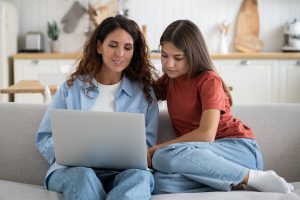
 Share
Share Tweet
Tweet


